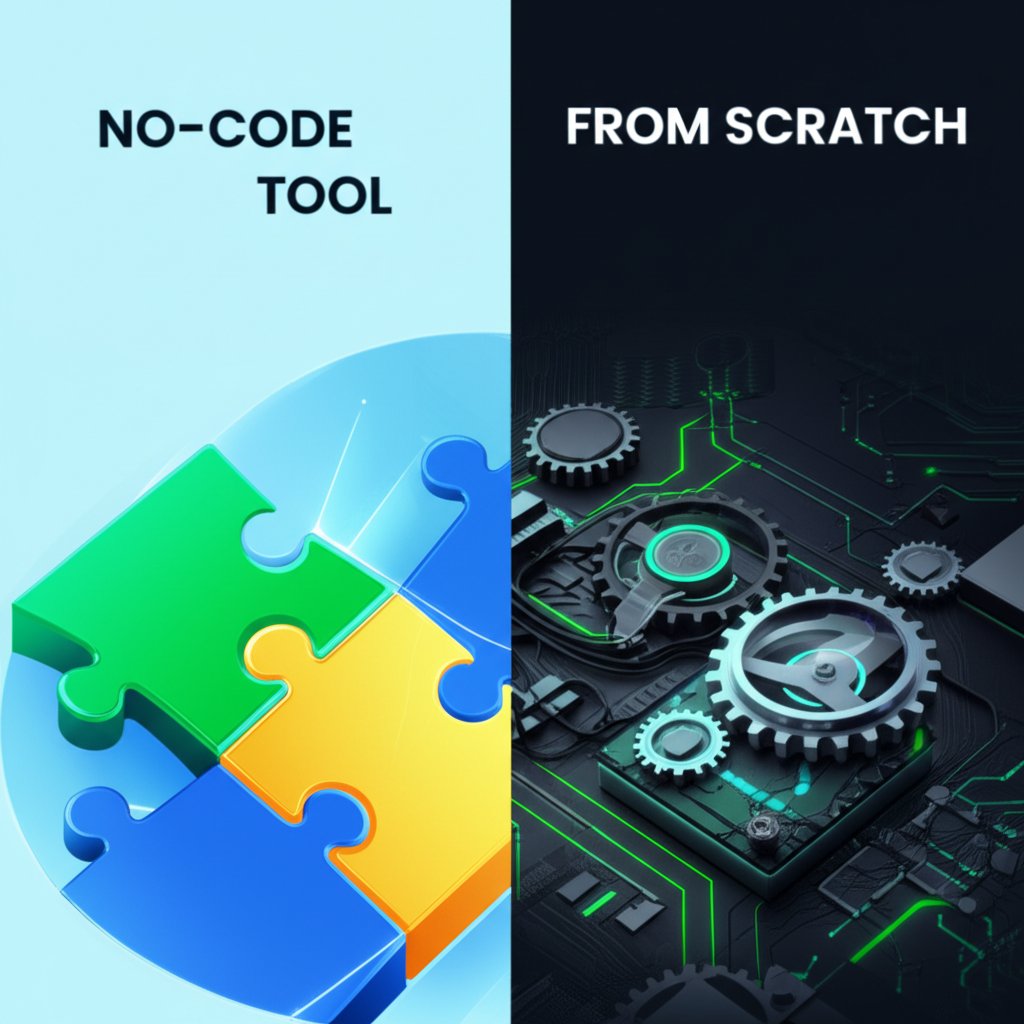TL;DR
You can create a search engine using two primary methods. The first is a no-code approach using a tool like Google Programmable Search Engine to quickly add powerful search capabilities to your own website. The second, more technical path involves building a search engine from scratch with a programming language like Python, which requires crawling websites for data, indexing that content, and developing an algorithm to rank the results for relevance.
Understanding the Core Concepts of a Search Engine
Before diving into building one, it's helpful to understand what a search engine does behind its simple search box. Think of a search engine as a digital librarian for the vast library of the internet. You ask it a question, and it quickly points you to the most relevant resources. This process relies on a few core components working in harmony to deliver results in fractions of a second.
The main components are:
- Web Crawler (or Spider): This is an automated bot that systematically browses the web. It starts with a list of known URLs, downloads those pages, and then follows the links on those pages to discover new ones, continually expanding its map of the web.
- Data Ingestion and Storage: Once a crawler finds pages, the data needs to be collected and stored on web servers. This isn't just limited to web pages; it can include data from APIs, databases, or other services to create a rich pool of information.
- Index: An index is like a library's card catalog. Instead of storing full copies of every page, a search engine processes and organizes the content into a massive, searchable database. It breaks down pages into keywords, metadata (like titles and descriptions), and other signals that make retrieval incredibly efficient.
- Ranking Algorithm and Results Page: When you enter a query, the search engine's algorithm sifts through the index to find matching documents. Its most critical job is to rank these results by relevance, so the most useful information appears first on the search engine results page (SERP).
The scale of this operation for a global engine is immense; for context, the web contains over 130 trillion pages. This is why most custom-built search engines focus on a specific website or a niche topic. This entire system is typically monetized through pay-per-click (PPC) advertising, which is how major search engines generate revenue.
Method 1: Using a Tool for Your Website (The Easy Way)
For those who need a powerful search function on their own website without writing code, a pre-built tool is the ideal solution. Google Programmable Search Engine is a leading option that lets you embed Google-powered search directly onto your pages. This method offers the speed and relevance of Google's core technology with customization options to match your site's design.
The primary benefits of this approach are its simplicity, speed, and cost-effectiveness. You can have a search box up and running quickly, and it can even generate revenue through AdSense. The main trade-off is that you have less granular control compared to a custom-built solution, and removing Google branding may require a paid plan.
Setting up your own programmable search engine is a straightforward process:
- Name Your Engine: Start by giving your search engine a descriptive name in the control panel.
- Choose What to Search: You can configure it to search only a specific list of sites (like your own blog and help pages) or the entire web.
- Configure Settings: You have the option to enable or disable features like Image Search and SafeSearch to fit your audience's needs.
- Create and Customize: After creating the engine, you can visit the 'Look and Feel' section to choose themes and styles that match your website's branding before embedding the code.
Of course, a great search experience on your site depends on having high-quality content to be discovered. For marketers and creators looking to scale their content production, tools like BlogSpark can revolutionize the workflow by helping generate engaging, SEO-optimized articles, ensuring your search engine has valuable results to deliver to users.

Method 2: Building a Search Engine From Scratch (The Developer's Way)
For developers who want complete control or are tackling a unique search problem, building an engine from scratch is the ultimate challenge. This approach allows for total customization but requires a deep understanding of software engineering and the core concepts discussed earlier. It's a significant undertaking, but breaking it down into stages makes it manageable.
The typical process for building a search engine with a language like Python involves several key steps:
- Defining Requirements: First, determine the scope. Will it search a single website, a collection of documents, or the open web? Answering this question clarifies the necessary infrastructure and tools.
- Web Crawling: You'll need to write or use a crawler to fetch data. A Python script using libraries like BeautifulSoup can parse HTML to extract content and find new links to follow.
- Storing and Indexing: The crawled data must be stored in a database. As you store it, you'll need to process and index it. This involves breaking down text into keywords (tokens), analyzing content, and storing it in a structure optimized for fast retrieval. Platforms like Elasticsearch are specifically designed for this task.
- Building the UI and Ranking Algorithm: Finally, you need a user interface (a search box and results page) and a ranking algorithm. The algorithm can start simple—matching keywords—and evolve to become more sophisticated.
When comparing the two methods, the choice depends entirely on your goals, resources, and technical expertise. A tool is fast and reliable for website search, while building from scratch offers unparalleled flexibility for custom applications.
| Aspect | Programmable Tool (e.g., Google) | Build From Scratch (e.g., Python/Elastic) |
|---|---|---|
| Effort & Time | Low (minutes to hours) | High (weeks to months or longer) |
| Control | Limited customization | Full control over all components |
| Cost | Free with ads, or low-cost for ad-free | Can be high (server costs, development time) |
| Best For | Adding search to existing websites | Specialized search applications, learning projects |
It's important to manage expectations regarding cost and scale. While creating a small search engine for a personal project is achievable, building a competitor to Google would cost hundreds of millions of dollars just for the initial infrastructure.

Optimizing and Ranking Your Search Results
Simply finding documents that contain a search term is not enough. The true power of a search engine lies in its ability to rank results by relevance, presenting the most useful information first. Whether you're configuring a tool or building your own algorithm, understanding ranking principles is crucial for user satisfaction.
Several foundational techniques help improve search relevance:
- Stop Word Removal: Common words like "how," "to," and "a" add little semantic value to a query. Removing these "stop words" helps the engine focus on the words that truly define the user's intent. For example, in the query "how to build a web app," the important terms are "build," "web," and "app."
- Stemming: This process reduces words to their root form. For instance, "building," "builds," and "builder" would all be treated as the root word "build." This helps the engine return relevant pages even if they don't use the exact verb tense or noun form from the query.
- Keyword Matching and Scoring: A basic ranking signal is how often a keyword appears on a page. More advanced systems create a relevance score based on keyword frequency, location (e.g., in a title vs. body text), and other factors.
- Link Analysis (PageRank): A groundbreaking concept introduced by Google, PageRank analyzes the link structure of the web. The core idea is that a link from one page to another acts as a vote of confidence. Pages that receive more links from other important pages are considered more authoritative and are ranked higher.
Modern search optimization also incorporates machine learning to analyze user behavior, personalize results, and better understand the nuances of human language. For anyone building their own engine, the journey starts with simple text matching and gradually incorporates these more advanced techniques to refine and perfect the user experience.
Frequently Asked Questions
1. How do search engines make money?
The primary business model for most major search engines is advertising, specifically pay-per-click (PPC). Businesses pay to have their ads displayed for relevant search queries, and the search engine earns revenue when a user clicks on one of those ads. Some private search engines may also use affiliate links or donations.
2. What is the real cost to build a search engine?
The cost varies dramatically with scale. Using a free tool like Google Programmable Search for your website can cost nothing. Building a small, custom search engine for a specific project might involve development time and modest server costs. However, building a web-scale search engine to compete with Google is a monumental task, estimated to cost over $100 million for a prototype and tens of millions annually for maintenance.
3. Can I create a search engine without any coding?
Yes, absolutely. Tools like Google Programmable Search Engine are designed specifically for this purpose. They provide a user-friendly control panel where you can define which websites to include, customize the appearance of the search results, and get a simple code snippet to paste onto your website, all without writing any code yourself.




